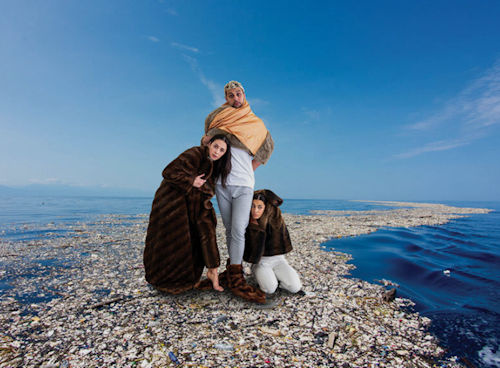It is a hot sunny Sunday afternoon in the Hamilton Gardens, and we arrive with anticipation to witness a performance in what has become associated with a quintessential Hamilton Gardens setting. The seating is laid out in the shade of a gazebo and a nearby tree to offer some protection from the sun to the audience, though not, alas, to the performers in action. We gaze at an area of sloping grass (albeit rather dry at present), and the narrow rectangular prisms of two tents decorated in subdued earth-coloured patterns. As the audience members take their seats, a man in white shirt and dark trousers is already walking slowly down the slope, looking intensely around as he moves and gesturing – as if he is searching for something – accompanied by the sounds of loud bird song. As he draws close to the audience, he begins to speak – a portion of a poem – setting the scene for the dancers. The five dancers begin to emerge from up the slope and from within the tents, running, grouping, regrouping, using the tents as ‘off-stage’ areas, busy, engaged, like excited children, yet clearly strong, fit, skilled performers. The soundtrack switches to a range of music, enhancing and accompanying the dance.
There follows a plethora of images, words, movement and dance. Images of using the earth’s resources, of animals being skinned for clothing (or perhaps just for amusement), of people dominating people and resources, of frenetic activity, humour, friendly (and not so friendly) interactions, ropes of bondage and connection, images of birth and playfulness, effort and commitment. The ‘taming’ of the earth’s resources. And the poets’ call to stop and wonder at the sky and the glories of the earth, to ensure that the fragile planet is honoured, protected and nurtured.
The soundtrack picks up the sharp rhythms of a group dance reminiscent of the Pacific – of Samoan sasa, slap dance, haka… Once again, the skill of the dancers is very evident. At one point, the soundtrack pauses, as the audience is invited to help provide the sound by rubbing hands together, clapping rhythmically and snapping fingers.
While there are some very serious themes presented in this work, there is also a lot of humour. Of course, humour can be a more effective vehicle for communication and the engagement of the emotions, than a message that is portrayed only through negativity, anger and guilt-making statements. Entertaining interactions and groupings appear in the dance, and movements reminiscent of slapstick add comedy. The dance is highly skilled, high energy, requiring intense engagement and flexibility to manage the ground surfaces and outdoor conditions, proximity to other dancers and the themes of the work. Not to mention the sunlight pouring down and the overheating provided by fur coats!
Between sections of dance and action, the poet/orator proclaims poetic messages. My husband, Stephen, immediately recognises sections of a poem by New Zealand poet James K. Baxter (High Country Weather). And we hear from the works of other writers, such as the Persian poet Hafiz whose quote Fear is the cheapest room in the house. I would like to see you living in better conditions has been reproduced many times on posters with different background images. Sounds additional to the soundtrack are produced by the clacking of a typewriter operated by the poet/orator, while pieces of paper supposedly covered with his typed words are read and played with by the dancers. The many pieces of white paper then provide their own form of choreographed dance, as the wind sweeps them along the ground. In the midst of this, the papers are used by the dancers as steppingstones – to another phase of this journey.
I note that this show was performed in Auckland 25-26 February in the Great Hall at Auckland Town Hall. This being the case, then I imagine that being outside on the bare ground has added an appropriate layer of meaning to this multidimensional work. It seems very fitting that the performers use the sloping grass area as a key entry point, along with the site-adaptive movements of rolling down the slope and perceiving the concrete pathway as a foreign obstacle to be crossed with collaboration, humour and creativity. However, the collaboration of artists in this work of ‘artivism’ brings its own message of reconciliation and co-operation, and the creative power of art.
Ngaa mihi. Kia ora ki enei hoa o te rangi. Best wishes for the future spreading of the message of This Fragile Planet.
Copyright © in the review belongs to the reviewer





Comments